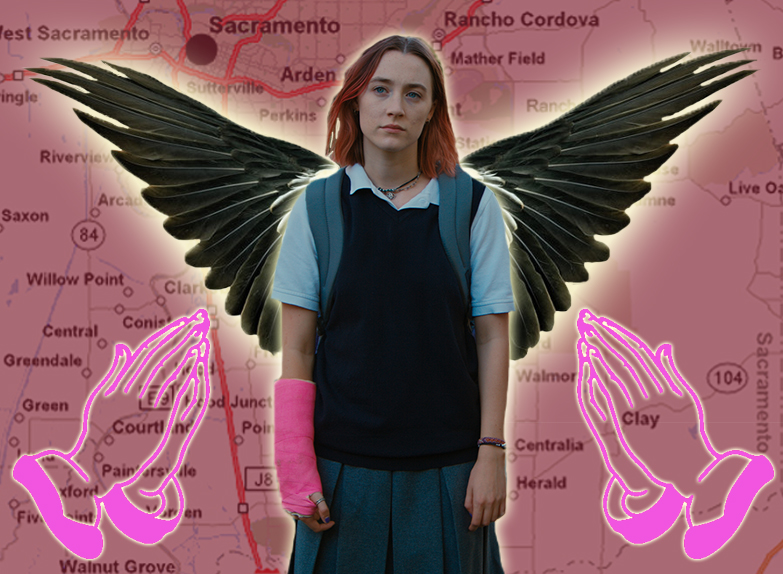Since September, I have been impatiently awaiting the release of the movie “Lady Bird.” I derived an embarrassing amount of joy from watching the trailer over and over like a music video. Finally, after months of anticipation, I dragged all my friends to see it (multiple times).
“Lady Bird” stars the brilliant actress Saoirse Ronan as high school senior Christine McPherson—Lady Bird as she calls herself. The film is a coming of age story about her tumultuous relationship with her mother. It was written and directed by Greta Gerwig, and is deeply rooted in Sacramento, the city where Gerwig grew up.
I’ve been a fan of Gerwig’s work since I watched her play a powerful feminist in the 2016 indie, “20th Century Women.” So when I heard “Lady Bird” was her brainchild, I was especially excited. In male-dominated Hollywood, it’s not often a woman is behind the lens or consequently that a female character comes across as both strong-willed and sympathetic.
Gerwig’s writing brings wit and authenticity to a genre which usually relies on cliches and stereotypes. Apparently she revisited her teenage diaries before writing the film, which helps explain how Lady Bird comes across like a real 17-year-old, down to her acne and poor posture.
Gerwig masterfully captures the flexibility of adolescence, when one is still experimenting with identity and trying to figure out their place in the world.
Lady Bird goes from one extreme to the next, trading her intelligent, overweight friend for the popular girl, and falling in and out of love first with a straight-edge theater geek and next with a brooding intellectual artist who carries around A People’s Guide to the History of the United States.
To me, Lady Bird’s quirks were what made the movie refreshing.
Lady Bird is impulsive and unapologetic, jumping out of a moving car to escape a lecture from her mom.
She feigns expertise with clove cigarettes and plots how and when she’ll lose her virginity.
When failing math, she throws away her teacher’s grade-book, and swears “on her honor” that her grade was a B.
She interrupts an anti-abortion assembly speaker’s “killing babies” propaganda with the terse statement that if the speaker’s mom had aborted her, at least people wouldn’t have to sit through the assembly.
My favorite moment in the film is after Lady Bird pranks the school’s principal, a nun, and then tries to seem cool in front of her crush Kyle by recounting the prank. She earns brownie points initially. Kyle (played by the gorgeous Timothée Chalamet) thinks anarchy is “hella tight.” He flirts, and says he won’t tell on her.
But then Lady Bird quips, “You better not, or I’ll kill your whole family!”— a joke that lands incredibly awkwardly, especially when Kyle reveals his dad is dying of cancer.
This moment is a great example of Gerwig’s ability to mix dark humor with the profound intricacies and cringeworthy moments of being 17.
Today, Lady Bird’s outlandish personal style would be considered “hesh.” But when the movie takes place, the protagonist’s choices stand out as just plain weird. Her pink hair clashes with her Catholic school uniform. She’s an art freak before it was mainstream cool.
Lady Bird is dying to escape her hometown and get into a prestigious liberal arts college in New York. Although this process sets the backdrop of the movie, the story focuses more on her experiences with friends, family and romance. I loved the movie’s reflection of high school as not merely academic preparation for college, but also the time for building character, making mistakes, and getting your heart broken.
The film’s title is a story itself. When the hero is asked at an audition whether Lady Bird is really her “given name,” she gives an emphatic “Yeah,” and then follows with a defiant: “It’s given to me, by me”—a reply that perfectly illustrates Lady Bird’s spirit and determination to shape her own destiny.
Originally published at www.theultraviolet.com


